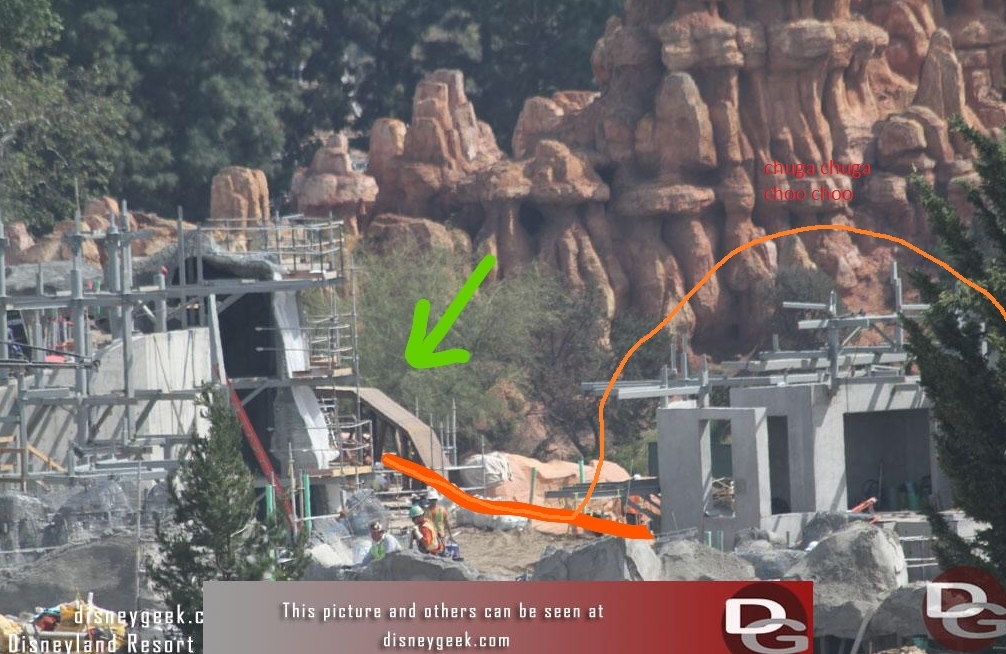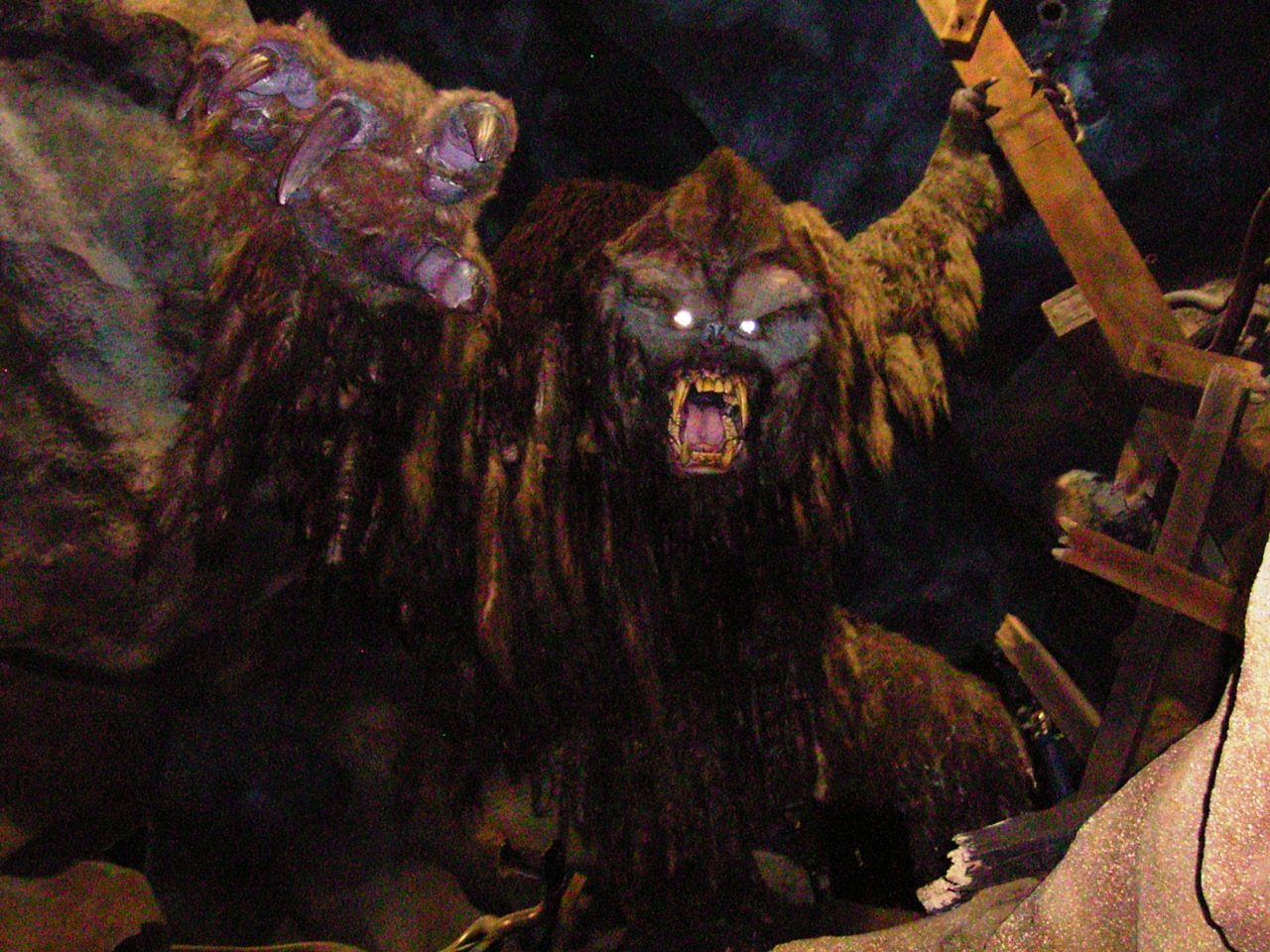truecoat
Well-Known Member
Train trestle on the right. I couldn't be more confused about the placement of everything. The train seems really high to me.
I assume you are talking about this trestle?
Last edited:
Train trestle on the right. I couldn't be more confused about the placement of everything. The train seems really high to me.
Lol no, I was talking about something else. I'm too embarrassed to say which thing now.

. . .
Also, at the 6:00 mark we get really good shots of the Indian Village. Am I wrong in thinking the "room" being built into the rockwork might be for the re-staged scene where the Indian Shaman tells his stories to the tribe? Or as the guys who guide the Canoes tell you, he's telling "The story of how the churro came to his people".
. . .
My lawyer has advised me to make no further comments.i think u mean this...?

Too bad there isn't a structural engineer on this board.
In my professional life, I'm more on the civil/transit side, but my education background is almost entirely structural engineering, taught within the framework of California's seismic requirements. I'm even sitting about 6' from a real live structural engineer at this very moment!
That said, I agree with everything @flynnibus has said: the legs should be steel to deal with the tall unbraced load (essentially creating a moment frame out of the 4 legs/columns), but there's really no clear reason that the body/head structures should be so solidly built. It would be fine to construct it out of wood or smaller steel members, and this would help reduce the loads that need to be supported so high up in the air.
From the joints and connections we've seen in construction photos and videos, these look like they will be entirely stationary (which is in line with Disney's policy of removing overhead moving set pieces, following DLP's Big Thunder incident), meaning they could essentially be made from paper mache and would be just fine. If there's no live load being applied to them from movement, and minimal dead loads from the structure itself, the structure can be surprisingly lightweight. it's a small world used this very approach for a fast & cheap build before the World's Fair, but those set pieces and props are doing fine 50+ years later.
The only potential logic I can think of is that WDI has been under fire recently for having too much overhead cost. By over-designing elements of projects with massive budgets like this, it helps them hide their high costs as being relatively smaller in comparison to the construction cost, even if that construction is unnecessary. When vertical construction began, I commented that the cross-bracing was massive for a warehouse-type building, which would seem to follow the general idea of this whole thing being incredibly over-designed (for whatever reason). Obviously I'm not running any calculations, nor have I even seen the structure in person, but from my position there seems to be something going on that we don't know about
EDIT: I know that "value engineering" gets a (mistakenly) bad reputation around these parts as being an excuse to cut show elements, but that's typically something that comes in the budgeting phase of a project. In fact, this is a perfect example of where value engineering could and should be applied, reducing the construction costs and structural loads, while still providing the exact same end product to guests, which in turn frees up more money to be spent elsewhere. It really makes me wonder what's going on with this project...
I'll be happy to answer any questions, though most people here seem to have a pretty good grasp of everything going on.
I don't think anyone has confirmed the type of material being used. It's mostly just people talking out of theirSorry if I missed the answer to this since I've skipped a couple pages here and there, but are we 100% sure that's structural steel being used on the body of the AT-ATs? They could be some sort of Aluminum or even Fiberglass structural shapes that give the appearance of steel with a fraction of the weight.
By "most people" you obviously aren't referring to me.
Nice, what grade do you teach P.E.?Ha. I'm actually a licensed Structural P.E. in New York, though I've done a lot more lurking than posting. I'll be happy to answer any questions, though most people here seem to have a pretty good grasp of everything going on.
Sorry if I missed the answer to this since I've skipped a couple pages here and there, but are we 100% sure that's structural steel being used on the body of the AT-ATs? They could be some sort of Aluminum or even Fiberglass structural shapes that give the appearance of steel with a fraction of the weight.

I agree with what has been said about the strangeness of the AT AT construction so far, but I'll play devil's advocate here for a second. I wonder if perhaps there will be an animatronic or other sort of prop mounted to or suspended from the AT ATs? Or maybe they will house equipment that will need to be serviced by mechanics? Point being, they may function as structural platforms and not just props.
Also, lest we forget, this may not be the most over-engineered thing in Disney history. The American Adventure is an example of extremely cautious engineering, with the deepest reaching foundations in Walt Disney World. And don't forget what under-engineering can lead to.

Mainly because from our perspective we can see.. it's one size all the way around. So it looks to be uniform in material.. which pretty much eliminates fiberglass.. and aluminum might be viable, but at what cost to make huge drawn beams like that? And still doesn't explain why not using more conventional dimensional stuff like tubes.
?? I couldn't care less. I was just thinking of reasons why they would build it out of structural steel.I think people are setting themselves up for disappointment with all these theories on big movement on these AT-ATs.
Register on WDWMAGIC. This sidebar will go away, and you'll see fewer ads.
